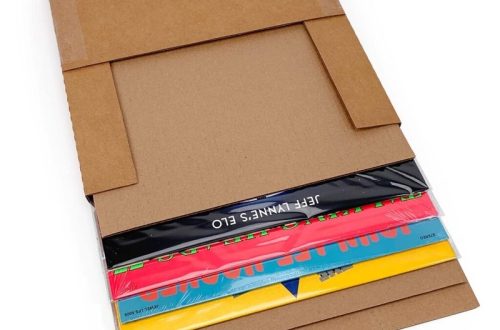Part 1: The Importance of Eco-Friendly Toys
In recent years, there has been a growing awareness of the impact that traditional toy manufacturing processes have on the environment. As a result, many parents are opting for eco-friendly toys for their children. There are several reasons why eco-friendly toys are seen as a sustainable choice for children’s play.
1. Environmental impact:
Traditional plastic toys often contain non-recyclable materials and can contribute to pollution during their manufacturing process. This results in an increase in waste that harms the environment. Conversely, eco-friendly toys are made from sustainable materials such as wood, bamboo, and organic cotton. The production of these toys minimizes the environmental impact and reduces waste in the disposal phase, contributing to a healthier, greener planet.
Moreover, conventional toys often contain harmful substances like BPA, phthalates, and lead, posing health risks to children. In contrast, eco-friendly toys are free from these toxic substances, making them safer for children to play with and reducing the risk of health issues like allergies, respiratory problems, and developmental disorders.

Aside from environmental and health benefits, eco-friendly toys also offer educational and developmental advantages. They inspire creativity by encouraging children to use their imagination in play, thereby positively impacting their cognitive development and problem-solving skills. These toys also stimulate sensory development as they are typically made from natural materials with unique textures and colors, enhancing the overall sensory experiences of children.
Furthermore, using eco-friendly toys at an early age can instill a sense of responsibility and environmental consciousness in children. It teaches them about sustainability and the importance of taking care of the environment, contributing to the shaping of their values and attitudes toward the planet.
2. Health benefits:
Conventional toys often contain harmful chemicals like BPA, phthalates, and lead, which can pose serious health risks to children. These substances have been linked to allergies, respiratory problems, and developmental disorders. On the other hand, eco-friendly toys are typically made from natural and non-toxic materials, such as wood, bamboo, and organic cotton, reducing the risk of exposure to harmful substances. By opting for eco-friendly toys, parents can provide a safer play environment for their children while minimizing the potential health hazards associated with conventional toys. This shift to non-toxic materials helps in promoting the overall well-being and development of children, ensuring that they can play and explore without potential harm from harmful additives and chemicals commonly found in traditional toys.
Part 2: The Benefits of Eco-Friendly Toys for Child Development
In addition to their environmental and health benefits, eco-friendly toys offer several advantages for child development.
1. Encouraging creativity:
Eco-friendly toys are often intentionally designed to be simple and open-ended, encouraging children to use their imagination and creativity during play. Unlike many traditional toys that are often pre-assembled or come with specific instructions, eco-friendly toys often have a more basic design, leaving room for children to explore and come up with their own ways to play. This type of play can have numerous developmental benefits for children.
By engaging in open-ended play with eco-friendly toys, children are given the opportunity to think independently and creatively, fostering their problem-solving skills and critical thinking abilities. Without the confines of rigid rules and instructions, children are prompted to devise their own ways of interacting with the toys, thus enhancing their imaginative and cognitive capabilities. This type of play can also encourage children to think outside the box, experiment with different ideas, and learn through trial and error.
Furthermore, eco-friendly toys often have a timeless quality to them, allowing them to be used in a variety of ways. A simple wooden block, for example, can become anything a child desires – a building, a car, or even a character in an imaginative story. This kind of open-ended play not only fuels creativity but also helps children develop versatile thinking and adaptability. It also encourages them to create their own narratives and scenarios, further enhancing their communication and storytelling skills.

2. Teaching sustainability:
Introducing eco-friendly toys to children enables parents to instill the notion of sustainability from an early age. Through these toys, children can learn about the significance of protecting the environment and the value of using sustainable materials. By incorporating eco-friendly toys into playtime, parents can facilitate discussions about the impact of consumer choices on the planet. This promotes awareness and understanding of environmental issues. This hands-on approach to sustainability can inspire a sense of responsibility in children. It encourages them to consider the environmental implications of their actions and choices. By immersing children in sustainable play experiences, parents can foster a mindset geared towards eco-consciousness and a respect for nature. This lays the groundwork for a future generation that values and prioritizes environmental stewardship.
Part 3: How to Choose the Right Eco-Friendly Toys
With the growing popularity of eco-friendly toys, there are now various options available on the market. Here are some tips for choosing the right eco-friendly toys for your children.
1. Look for certified products:
When seeking eco-friendly toys, it’s important to prioritize products certified by respected organizations like the Forest Stewardship Council (FSC) or the Global Organic Textile Standard (GOTS). These designations signify that the toys are crafted from sustainable materials and adhere to stringent environmental and social standards. Certification by the FSC confirms that wood used in the toys originates from responsibly managed forests.
This promotes ethical and sustainable practices. Similarly, GOTS certification guarantees that textiles, such as organic cotton used in toys, meet rigorous ecological and social criteria. This ensures that the materials are produced and processed through environmentally and socially responsible methods. By selecting toys with these certifications, parents can make informed choices. They support products that align with their environmental values, while offering children safe and sustainable play options. These certifications serve as reliable indicators of a toy’s eco-friendly attributes. They provide assurance that the products meet established sustainability and ethical standards.
2. Consider longevity:
Eco-friendly toys are typically crafted with durability in mind, ensuring that they are long-lasting and sustainable choices. When selecting eco-friendly toys, it’s essential to prioritize items that are well-made and built to endure extended use. By opting for toys that can withstand the test of time, parents can minimize the need for frequent replacements. This reduces the overall environmental impact associated with toy production and disposal. Furthermore, the durability of eco-friendly toys allows them to be passed down to younger siblings or other children. This extends their lifespan and fosters a culture of reuse and sustainability. This practice conserves resources and promotes a circular economy. Products are reused and repurposed, contributing to a more environmentally conscious approach to consumption and waste management. With their robust construction, eco-friendly toys offer a sustainable alternative. This aligns with the principles of longevity, resource conservation, and minimized environmental impact.

Part 4: The Future of Eco-Friendly Toys
As the demand for eco-friendly products continues to grow, the future of eco-friendly toys looks promising.
1. Innovation in design:
With advances in sustainable materials and manufacturing processes, there is a growing opportunity for innovative and unique eco-friendly toy designs. Manufacturers are increasingly exploring new ways to create eco-friendly toys that are not only sustainable but also engaging and fun for children.
2. Education and awareness:
As more parents and caregivers become aware of the benefits of eco-friendly toys, there is a growing emphasis on education and awareness around sustainable play. By teaching children about the importance of choosing eco-friendly products, we can instill a sense of environmental responsibility from an early age, setting the stage for a more sustainable future.
In conclusion, eco-friendly toys offer a sustainable and beneficial alternative to traditional toys for children’s play. – Eco-friendly toys have environmental and health benefits. They also have a positive impact on child development. They are a valuable choice for parents. Parents can provide their children with safe, engaging, and sustainable play options. By choosing eco-friendly toys, we can help shape a brighter, more environmentally conscious future for the next generation.



